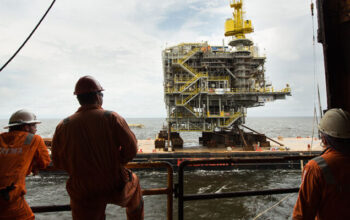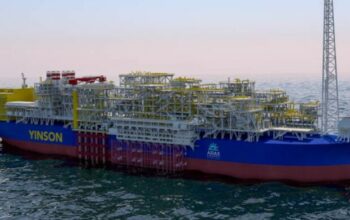Senegal’s inaugural offshore oil project – anticipates first oil in mid-2024. Operated by the Australian exploration and production company Woodside Energy, the project is set to process 100,000 barrels per day through FPSO Léopold Sédar Senghor from subsea wells. Once operational, Sangomar will mark Senegal’s debut in oil production, generating several important impacts for the country and the wider region.
Revived Exploration
With the arrival of first oil, the MSGBC region will likely see a resurgence in exploration. While the Australian exploration company FAR’s initial well in The Gambia did not yield results, an extension granted last July suggests the possibility of new discoveries, given The Gambia’s close proximity to the Sangomar Field. Moreover, the Nigerian National Petroleum Corporation signed a Memorandum of Understanding (MOU) in February 2023 for oil exploration in The Gambia. Meanwhile, Guinea-Bissau is exploring new drilling frontiers following an MOU signed with Eni for offshore hydrocarbon exploration, as well as the transfer of PetroNor E&P’s exploration licenses to Apus Energy. The move indicates renewed interest and potential discoveries in the region’s offshore acreage.
Associated Gas for Power
Given that gas flaring is prohibited by Senegal’s Hydrocarbon Code, the country plans to utilize associated gas from offshore oil production in a specific development phase in 2025-2026. A pipeline project is also underway to connect offshore fields to the Malicounda power plant, aiming to supply electricity to the sub-region. Meanwhile, the Sandiara gas-to-power plant, set to commence construction in 2024, is considering the use of Sangomar associated gas, as well as the construction of a pipeline between Malicounda and the Special Economic Zone.
Downstream Developments
In Senegal, a domestic refinery will treat part of the production deriving from the Sangomar Field. The country’s Société Africaine de Raffinage (SAR) is in advanced discussions with the African Export-Import Bank for $500 million in syndicated finance to further upgrade its aging refinery, aiming to increase annual production from 1.5 million to 3.5 million tons of refined petroleum products. As West Africa’s oldest refinery, SAR recently underwent an upgrade to enhance its production capacity. Senegal is exploring additional downstream projects, including a liquefied petroleum gas storage facility, currently under feasibility studies.
Boost in GDP
Senegal presents strong growth prospects, enhanced further by oil and gas production set to boost the economy in the coming years. GDP growth is expected to increase to 10.6% in 2024 and 7.4% in 2025, with hydrocarbon-related growth of around 5%. Following the new budgetary rule, additional revenues from oil and gas exports will be set aside to maintain public spending levels as the country transitions to renewable energy. This influx of capital is anticipated to also stimulate the growth of neighboring MSGBC countries, Senegal’s preferred trade partners.
![]()




